Note: I may (or may not) add pictures to accentuate this editorial at a later date. – pjs.
With Final Fantasy XIII finally hitting the Western world, early criticisms from numerous video game websites all point toward a clear and concise outcome. While the reception of the Japanese release had already foreshadowed the following to be true this past holiday season, now that the rest of the world has seen and spoken their thoughts about the game, I feel it is now appropriate to dissect Square-Enix’s debut Final Fantasy title of the HD generation.
In the words of Christian Nutt, it is clear that Final Fantasy XIII is one of the most polarizing games of 2010. To fully understand this statement, we must first unpack several important questions. Why Final Fantasy XIII? Or possibly more important: Why Final Fantasy? Trends have shown that while the game received mixed reception both within its home soil as well as international soil, the biggest polarization of the game’s reception comes between Japan and North America. For those who may already be clueing in to part of where I’m getting at, the rest may sound like self-indulgent rhetoric, but Square-Enix–who has been struggling for almost a decade to create the universal RPG–must know that their most essential design choices for Final Fantasy XIII, and how those choices were received by the masses, have hit (if not blindly unaware of it) the core of the problem regarding true international success. A polarization so significant, more than any title that came before it, has to have made Square-Enix aware that they’ve inadvertently experimented with an infrastructure (unforeseen or not) that has greatly defined the success of their video games.
________What Final Fantasy XIII Is
While one can praise Final Fantasy XIII for its awe-inspiring graphics or its fast-paced battle system, at the end of the day, it is obvious that Final Fantasy XIII is fundamentally shaped and defined by its characters. While many other RPGs try to divide the player’s investments across many aspects of the game design, Final Fantasy XIII facilitates a very pronounced, character-driven experience by not only increasing the frequency in which cutscenes occur, but also removing secondary distractions such as party customization and extensive gameplay mechanics for a very large portion of the game. Parties are regularly being changed and altered as you are shifted from one cast member to another, leaving absolutely no freedom to customize character setups beyond the Crystarium until much later in the narrative (more on this later).
Another major design choice Square-Enix chose to compliment this character-driven experience is in the way they handled maps and navigation. Play Magazine described the environments as being no more than “wallpaper thrown over a tunnel that players walk through”, and GamePro summarizes the gameplay as “a long hallway toward an orange target symbol on your mini-map that triggers a cutscene, a boss fight, or both”. Persuasive rhetoric aside, it is true that Final Fantasy XIII’s exploration maps invite very few opportunities to stray off of the high road, and even if you do, the convenience of orange exclamation points allow you to backtrack onto the main path if you do happen to get lost. This in itself is not a flaw, in my opinion, but it does place pressure on players to stay anchored on traversing only the ‘relevant’ parts of the map–chests are not even marked on the maps until after you’ve opened them.
So while the inclusion of Gran Pulse and its accompanying plethora of end-game content does reintroduce the elements of player agency like party customization and world exploration into the mix, for many, having to wait until the last 2-3 chapters of the game to gain access to these features leaves the entire affair feeling like more of an after-thought than a fully integrated system within the game design.
So in light of these polarizing results, the biggest question has still got to be simply: Why? The magnitude in which these design choices were implemented is not small, meaning that Square-Enix had to have thoroughly considered their options before finally coming to a decision as to what vision they wanted to take with Final Fantasy XIII. So what sort of factors might have influenced them to take such a route with their debut HD Final Fantasy title? The scope of this question is vast and buried beneath many layers of complexity, but realistically we can examine this inquiry in two major ways. First is by mapping the history of the video game industry, and the second is by deconstructing the JRPG and the WRPG, and how cultural thought processes influence how each one is developed.
________Looking at the History of the Business
First and foremost, Final Fantasy has been around for a very long time. Prior to the turn of the 21st century, and more importantly, prior to the entry of this new generation of HD gaming, Final Fantasy had always set the benchmark for console RPGs; sometimes, Final Fantasy was the only RPG brand to play. This was definitely true for consoles throughout the 1980s and 1990s when an RPG was defined as something that ‘only came out of Japan’. Consequently, irregardless of where you lived in the world when you became interested in console RPGs during the industry’s infancy, Japanese RPGs–most notably Final Fantasy–were the only available games out there that you could be exposed to.
Broadening this topic for a moment, it should be noted that while the console sector was founded by companies like the Magnavox and Atari throughout the early 1970s, after suffering two massive industry crashes leading up to 1983–by which time, all North American console projects had been discontinued–companies like Nintendo and Sega soon came to dominate and dictate what became of the industry, both in what was made and what sort of games came to be considered entertainment. In other words, by the dawn of the 1980s, Japanese-developed video games and video game consoles popularized what would eventually become what people came to identify as the video game industry.
With Squaresoft having made themselves exclusive third-party developers for the Nintendo brand, the success of the NES and SNES–both of which were the best-selling consoles of their generation–allowed Final Fantasy to systematically define the console RPG genre with each new reiteration over the next twenty years. This continued to be the case even after the introduction of the Playstation in 1995 and the Playstation 2 in 2000 when Squaresoft changed their exclusivity from Nintendo to Sony (also a Japanese company). At the turn of the millennium, however, the industry would soon see a significant change.
A Shift in the Industry
When Microsoft launched their original XBOX console in 2001, the video game industry would never be the same again. Besides being the first successful North American-based video game company to introduce a console into the market since the video game crash of 1983, Microsoft’s greatest achievement was the popularization of the First Person Shooter genre for the consoles. Older relics like Doom, and more particularly Counter-Strike may have already popularized the genre for the masses, but it was not until the release of Halo: Combat Evolved that people began to view the FPS genre as something that made sense for the consoles. Despite the fact that the Playstation 2 still prevailed as the best-selling console of its generation, Halo: Combat Evolved managed to sell one million copies within the first five months of release–something no other video game at the time managed to do, and by April of the following year, it became clear that the FPS was a winning formula in the Western world.
Fast-forwarding to 2005-2006, the dawn of our current generation of HD gaming, we see even bigger development among Western developers. Be it a confidence boost from Halo’s commercial success or otherwise, it is only during this generation that we see a large expansion of video game development by Western developers across numerous genres including the Action/Adventure and of course, the Role-Playing genre. Franchises like Gears of War, Fable, Killzone and Fallout are only a few examples of these efforts.
With North America now once again an influential force in the industry, developers like Square-Enix who continue to aim for international success with their video games can no longer ignore this emerging trend. In hindsight, it now becomes clear why during one of his last interviews, Kitase Yoshinori describes Final Fantasy XIII’s pacing as being closer to a First Person Shooter campaign than as a traditional JRPG. At first it seems like a very bizarre comparison, but upon dissection of Final Fantasy XIII’s design, these similarities are more readily seen.
The campaigns of First Person Shooters, at their core, are fairly simple. Usually comprised of fast-paced scenarios where players are made to travel from point A to point B, there is no back-tracking after each level is completed, and once you complete your objective, you are almost immediately thrust into a completely new scenario and the process begins anew. This perpetuation of a high-intensity experience gives the First Person Shooters its charm, and clearly has been something Square-Enix tried to emulate in Final Fantasy XIII. All the areas you travel through during the first 10 chapters or so are no longer visitable after you leave for the next area, and the constant change of party members depending on where you are in the plot is a facilitation of this ‘scenario’ experience. Towns and cities are non-existent save for the plot-relevant ones, but the paradigm of town-stop-overs to rest at the Inn and upgrade party gear is remarkably absent. Instead, you are relentlessly pushed through the game’s narrative with generous amounts of save points that take care of all your upgrading needs. In this sense, it can be said that a majority of the adventure in Final Fantasy XIII is a simulation of objectives that are thrust on the player one after the other.
________Some Cultural Context
Individualism vs Collectivism
Western colonial history is a big part of what eventually defines this prevailing individualistic ideology, but to discuss colonialism and how it has shaped North America culture leading up to today would be far too arduous a task in its entirety. But for the purposes of this editorial, what is important to understand is the way in which colonial discourse has consequently bred our society to 1) value our autonomy as unique individuals in a world where we relate and evaluate ourselves and others through modes of difference, and 2) normalize these cognitive frameworks as being relevant across all walks of life; ‘our way’ is the way it ‘should be’, and/or ‘always has been’.
Individualism pervades many aspects of human living here in North America. From a very young age, children are taught to express themselves creatively, value their uniqueness, and above all, do these things confidently and without reservation. Schoolwork is designed with ideas of self-reliance in mind, and there is a particular emphasis placed on analytical models of problem solving, using one’s own knowledge to examine, evaluate and complete tasks of adversity. While group-oriented work and cooperation among group members are still major parts of almost all curriculum programs, successful and cohesive group productivity is often achieved through the collective efforts of people with individual expertise, and we see this when Sally, who is good at arts and crafts, is chosen to make the bristle board for her group’s history presentation, and Jim, who is good at writing, is chosen to summarize and type up the group’s presentation notes. Teamwork, then, is just as much of an individual expression of production as it is a collective one.
This Western ideology of individualism has not only been a relentlessly instilled concept in North American thought, but also normalized to the point of invisibility; we are systematically posed to see these cognitive frameworks as being natural and especially self-evident. Byproducts of this naturalized outcome can be seen across many institutional realms–the political, social, religious and sexual realms of human experience just to name a few. Monogamy, democracy, heterosexuality; Western colonial history has developed these institutions for us and have engrained it in our culture in such a way that we sometimes forget to appropriately objectify these ideas. Our individualistic identities push us so far into believing and placing ourselves at the centers of our own lives that we sometimes mistake our ideologies as being the ‘way things should be’, and fail to consider our methodologies as being one of many in an ultimately perspective world.
Collectivism is a prevailing ideology of many Eastern nations, but for our purposes we consider specifically the ways in which this is relevant to Japan. History, much like colonialism was for Western expansion, has had an undeniably significant role in this country’s adoption of a collectivistic way of life. The postulates that make up collectivism are so distanced from our individualistic experiences that it is no wonder that beyond our amicably named ‘moon language’ of Japanese written word, many find themselves simply ‘not getting’ Japanese culture.
Conversely, collectivism places value on communal harmony among populations, and emphasizes a structure of interdependence between individuals. Simply put, it is more important to consider the needs of the group over the needs of any one person. This philosophy is applied in many different areas of Japanese society. In many schools, dress code is much stricter than anything in the West with things like hair color, piercings and sometimes even fingernail length being monitored. Students are not particularly encouraged to speak up and question the opinions of their instructors. Conformity, something that in the West is often discussed in a more pejorative light, is a much widely more practiced–if not accepted–way to deal with disparity. To be accepted by one’s peers and to fit in with the rest of the community is seen as much more important than to be uniquely expressive. For individualist cultures, this philosophy is collectivism’s greatest criticism. However, this is not to say it is without its own advantages. Because of its holistic nature, people of collectivist cultures are much more sensitive of others around them, and are more aware of conflicts that are present in their surroundings. Empathy is a much more tangible concept in collectivistic thought, allowing them to better understand the perspectives of others much more than individualists.
We can find collectivistic thought all throughout Japanese history, including poetry and even within the wealth of Japanese fables and mythology. The philosophical view that ‘the whole is greater than the sum of its parts’ is a common theme in literature, and even more so among pieces which depict families–a very pivotal part of Japanese living. In a short story written in the late 1660s, entitled Nippon eitaigura, a son of a wealthy merchant sets out to find his own fame and fortune with nothing but the clothes on his back. During his travels, he considers options like ‘picking up empty shells which people scatter over the town, burn them at Reigan-jima, and sell the ashes as lime’, or ‘shred edible seaweed or shave dried bonito into ‘flower-strips’ and sell them by the plateful’. This son, named Shinroku, eventually purchases a roll of cotton and cuts them into sequentially and sells them as hand towels. Slow at first, he finishes making his fortune over the next ten years.
The above summarization of an old rags-to-riches tale is one such story that many Japanese businesses still mimic to this day. The idea of maximizing volumes, and making profits by small margins over long periods of time is reflective of their understanding of an ideally functioning society. Individually, one sale is insignificant. But when many of these sales group together, the impact is much more meaningful. It goes without saying that this is just one symbolic representation of collectivistic thought, and its presence and pervasiveness in Japanese culture.
________Tying it all together
Final Fantasy XIII has certainly made some substantial changes from previous instalments of the franchise, but despite Square-Enix’s genuine attempt to create a game that would appeal across the seas, they have instead created the most polarizing Final Fantasy title of all time. I had already mentioned earlier in this editorial that this polarization had to be a signifier that Square-Enix had struck the core of their problems regarding international success, and now that the foundations for the historical and cultural contexts have been laid, we can finally start to pull some strings together to explore what has caused this polarization.
JRPG vs WRPG: A Fundamental Shift in Preference
To reiterate, console RPGs up until this generation have been primarily dominated by Japanese developers. While not inexistent by any means, Western-developed RPGs that were well-received stayed primarily on the PC and went relatively unnoticed by a large portion of the gaming demographic. This changed when Western developers finally started investing more budgets on console RPGs, producing titles such as the Mass Effect series, Fallout 3, the Fable series and so forth. Not only did these RPGs do exceptionally in sales and win a multitude of yearly awards, but it also marked the beginning of a continuing slew of criticisms regarding JRPGs. It may have been the first time we even needed to make the distinction of JRPG. We have all heard the arguments. Statements such as “JRPGs are outdated”, “JRPGs are boring”, “JRPGs need to reinvent themselves” continually flooded message boards and video comment boxes throughout the internet and sadly enough, even made their way onto published magazines and out of the lips of ‘distinguished’ experts on television programs. How did the industry standard for RPGs suddenly become out of date within such a short period of time?
When comparing Japanese developed RPGs with Western developed RPGs, one fundamental difference stands out the most: linear vs nonlinear storytelling. Critically-acclaimed titles like Fallout 3 and the Fable and Mass Effect series all share in common in a nonlinear approach to storytelling. In all three games, players are able to crucially shape both the direction of the story and the development of the main character. In Fallout 3, players are given a chance to nuke an entire city which greatly affects the story (how would it not?). In Fable, you can choose your character’s gender and subsequent choices you make throughout the game can slowly change the way your character looks. In Mass Effect, you can additionally adjust a variety of facial features and piece together a preset backstory before even starting the game. Such considerable character control is nonexistent in JRPGs, which stick primarily to linear structures with characters and storylines which players cannot create, edit or make decisions for.
If we were to apply what we know of individualist culture, it is easy to see why so many North American RPG fans have switched loyalties to the WRPG brand. In a society where valuing uniqueness and expressing individuality is a well regarded philosophy, being able to choose how we look and what decisions we make in our video games is truly, a very fulfilling experience. Such a structure caters to our desire to be who we want to be, and always be at the center of our own experiences as we play through our RPGs. As individualists, we are more ready to attach ourselves to the paths we have created with our own hands, and invest ourselves into stories that we know we were responsible for making.
For collectivist cultures like Japan, a linear storyline is much easier to digest than individualists who are more inclined to be unsatisfied with the lack of control. Because the collectivist’s capacity for empathy is so much bigger than the former, they are more ready to invest themselves in the predetermined storyline that is unfolding before them, even if they have no control over what comes next. Even if the characters they follow throughout the game are out of their hands to manipulate–in both how their personalities change and the choices they make–their holistic innateness in seeing ‘the bigger picture’ may make it easier to relate and understand where the characters are coming from, allowing them to feel just as important to the story (if not more) as the characters they are following.
These kinds of frameworks greatly shape development choices that studios make when creating RPGs, and it is no surprise that Western developers were as well-received as they were by North Americans when their RPGs finally hit the market. North Americans know best what North Americans want because they understand each other and are looking at games with the same eyes.
So when we consider the recent trend of JRPGs failing to please Western audiences, I attribute this to a fundamental preference shift that happened in Western audiences when they became exposed to nonlinear RPGs, rather than simply: JRPGs are outdated. The preceding criticism, along with others such as “The Japanese market is failing” are but context-specific demonstrations of how our colonial history has continued to normalize our culture as being globally self-evident and self-relevant. While this has been the case for JRPGs over the past couple of years, Final Fantasy XIII is but a most recent example of this effect.
The Problem of Agency
Gamasutra’s Christian Nutt was on to something big when he explored the significance of player agency back in January in his own Final Fantasy XIII analysis editorial. It cannot be understated how important this concept is to the experience of RPGs, and consequently the enjoyment of RPGs. Final Fantasy XIII is probably the best example of this since perhaps more so than the argument of linear vs nonlinear storytelling, Final Fantasy XIII’s greatest criticism of all is its incredibly skewed negotiation of the ‘structure vs agency’ dilemma.
Developers of RPGs (both Western and Eastern) are faced with the task of having to balance the player’s experience of the RPG through structure such as the pacing of the story, party customization, accessibility to towns and world maps, and agency–that is to say, the degree of freedom in which the player is able to control and experience these structural elements of the game design. When the thought of Final Fantasy XIII being ‘too linear’ surfaced among reviews of the gaming community, many people interpreted this as being an empty–and virtually irrelevant–piece of advice because Final Fantasy titles have always been ‘linear’. It is important for us to understand that this criticism was not aimed at the argument regarding linear vs nonlinear storytelling, but at this conceptual spectrum of structure vs agency.
All RPGs, regardless of their storytelling approach, grapple with this dilemma. When we talk about cutscene direction–when, where and how often they happen–we are dealing with structure. When we talk about the ways in which players can initiate these cutscenes (for example, players can choose to view cutscenes A through D in any order they like), we are dealing with agency. When we talk about what sort of skills and abilities specific characters can learn throughout the game, we are dealing with structure. When we talk about to what degree we can specialize these characters in battle, through equipment, naturally learned abilities or otherwise, we are dealing with agency. A very popular application of agency in JRPGs–considered by some to be quintessential–is the aspect of backtracking maps, exploring towns and villages, and progressively consolidating party setups as the game goes on. As you might have already concluded, all three of these (though one might argue only two) are missing from Final Fantasy XIII’s formula. This is the kind of agency (or lack thereof) that has garnered the phrase ‘too linear’ among critics. With the removal of towns and villages, along with the ability to steadily improve and consolidate your party and backtrack previously explored maps, people feel that the world they are experiencing, and the choices they can make, are inconsequential and ultimately meaningless. Truly, if one believes these parameters to be an essential part of their RPG experience, then its absence from the game’s structure is a glaring flaw, if not an indicator of failure as an RPG.
When it comes to Square-Enix’s resolution of this ‘structure vs agency’ dilemma, the resulting polarization of the fanbase in regards to Final Fantasy XIII is but a signal that Square-Enix has sourly misunderstood what sort of demographic makes up their fanbase. Yoshinori Kitase had already affirmed that while the company does recognize how well nonlinear approaches to storytelling work for Western audiences, it will still continue to produce linear games, justifying this conscious decision as being ‘the best’ way to deliver their visions. This in itself is not the problem as all previous instalments of Final Fantasy retained this linearity without a notably polarized result. Rather, it shows that within the Final Fantasy fanbase, two types of players exist. As you can guess, this division is greatly determined by structure and agency. The first of the two is what I’ll amicably call the obsessive-compulsive-level-grinders. These are the gamers who look forward to the battle systems the most when they hear news about the newest Final Fantasy title coming out. They’re always the first to optimize gear setups and develop thoroughly complex (but effective) strategies against post-endgame bosses. They’re the ones who refuse to take on the final boss of the game until they’re at the absolute final level with everyone’s final weapons and gear. They’re the ones who actually liked Final Fantasy XII (I’ll allow myself this one instance of self-indulgence). The second of these two types in the fanbase are the story-and-character-driven players. They’re the ones that care the least about the battle systems and care the most about the cast and the mythology. They’re the ones who look up character profiles on official websites to find out mundane things such as a character’s height, age, and weight. They’re the ones who define a RPG’s success by the believability of its plot and consistency of its characters. Character development is an absolute must to receive any good rating.
It should be said that this division is not black and white, as there are many who lie at the middle of this scale, but because of Final Fantasy XIII’s game design–one that Kitase has stated to be a story-centric RPG–the game’s polarizing reception is a good indicator that these two types not only exist, but have greatly affected players and their experiences of the game. As a result, you have one side of the fanbase (the level-grinders) who are upset about the game’s ‘too linear’ approach, and the other (the story/character-driven) who describe Final Fantasy XIII as a fantastic experience. Square-Enix might have thought that people who continued to buy their RPGs in spite of the new Western trends in storytelling simply preferred linear ones (which may be true to an extent), but they may also have overestimated what exactly it is about linear JRPGs that players enjoy so much. To say the least, they should have a much better idea now.
________A Personal Perspective
For the record, I fall under the second type of gamer. Interesting and believable characters have always been at the top of my list when I investigate RPGs, followed by story, music, graphics, then finally gameplay. When I first got word of how Final Fantasy XIII was receiving mixed reception in Japan back in December, I began to dig deep to discover where exactly this was coming from. While intangible at the time, I found out about some of the design choices Square-Enix made about Final Fantasy XIII, but could not quite pinpoint what exactly it was I was grappling with in my mind. Christian Nutt’s January article on Final Fantasy XIII was like an epiphany, and pretty much put all the pieces together.
There is no denying that Final Fantasy XIII is a highly perspective game, one that caters to a very specific kind of RPG player–fortunately enough for me, I happen to be that specific kind of player. But while this means that there are many who won’t enjoy the game as much as I probably have, this does not make Final Fantasy XIII a bad game, contrary to how some reviewers have talked about it. Square-Enix had a certain vision for the game, like all developers do for their RPGs. These visions affect the direction a game takes, and is it only fair that we judge these RPGs along the parameters in which they have followed. I feel many reviewing sites fail to do this. Because Final Fantasy XIII has been designed with a story-centric focus in mind, we must judge its credibility as a RPG in how well they execute this kind of framework, instead of judging it based on what [i]we[/i] feel makes a good RPG, and on what we want to see (colonial discourse echo?).
To start, a story-centric game requires that above all else, the story and its characters must always be at the forefront, and must always be the driving force of the entire game. To do this, Square-Enix had to make some very bold design choices in order to accomplish this, and the most significant of these is the moderation of agency. Yoshinori Kitase continually advertised Final Fantasy XIII as being a cinematic, story-centric RPG, one that would focus on the emotions of its characters above anything else. To produce a game with this direction in mind, agency is certainly an obstacle. In order to fully control how a player experiences the characters and experiences the story of the game, a developer must take care to avoid any kinds of distractions interfering with the player’s attention. Agency is one such distraction as it directly affects the pacing of the game, something that is most effective for cinematic experiences if it can be controlled by the developer.
Agency also creates what I like to call ‘story-telling-downtime’. This occurs whenever you find yourself doing something that works outside of the plot and doesn’t push the narrative forward. Side-questing, or the long hours spent in the menus reorganizing ability setups, upgrading weapons and armour, or getting lost in villages wondering where the save point is or where the next objective is; these are all examples of such ‘story-telling-downtime’. From a story-centric standpoint, these instances are detrimental to the gaming experience because it–for however long the activity lasts–disjoints the player from the story and disconnects them from the players. Pacing is important because if any particular section of the game drags on too long, players begin to lose interest and sometimes even forget what it was they were meant to do. By removing obstacles such as towns and villages to explore, Final Fantasy XIII can eliminate this potential source of downtime and concentrate on keeping the player engaged in events that matter. Additionally, being unable to intricately customize your party due to constant party swaps allows players to not be distracted by the notion of ‘creating the perfect setup’. Instead, by reducing the need for players to enter their menus and make adjustments, they can focus more exclusively on the characters, and perceive the narrative unfolding before them as being more relevant to the gaming experience.
It should be addressed that Final Fantasy XIII actually does have level-grinding, side-quests, map backtracking and party customization aspects in it, however, players do not get access to these freedoms until at least the third last chapter of the game. So in a sense, these criticisms of being ‘too linear’ can be argued to be untrue since–in my opinion–everything a level grinder would want is present in the game ‘at some point’. I punctuate ‘at some point’ because it is this statement that seems to illuminate the point of contention regarding this issue. A ‘level-grinder’ friend of mine told me recently that “[he] would never replay the game again because [the game] takes too long to allow [him] to do anything”. So while he acknowledges that agency does exist in the game, the time in which it takes to arrive to that point is far too long. In essence, this is the true criticism behind the ‘too linear’ claim.
As a story and character driven player, I can understand why Square-Enix made this decision. If anything, I believe Square-Enix always wanted to have these end-game/post-game elements in Final Fantasy XIII and had no intention of ever leaving them out. They problem was how to insert them into the game design without affecting their story-centric approach. Choosing to throw in all these elements at the end of the game may seem sloppy on the surface, but from a story-centric framework, placing this in and around Chapter 11 was a well-thought out choice.
Not to divulge any spoilers, I’ll keep it simple by saying that for the first 10 chapters of the game, the main cast of Final Fantasy XIII were all grappling with their own realities and coming to terms with the events–however dire–befalling them. By constantly pushing forward the narrative with very little downtime, not only was the overall story of Final Fantasy XIII longer than anything that came before it, but it also allowed for Square-Enix to more gradually flesh out each and every character in the cast. By the end of Chapter 10, the cast of characters whom for the longest time thought only of themselves and cared little about the others, finally came together and consolidated themselves as allies and as fellow kin; humans battling the same fate. This consolidation of the cast as a united front coincided directly with the introduction of Gran Pulse and its accompanying ‘level-grinding’ elements. I suspect that this decision was because Square-Enix felt comfortable in granting more agency to players only after they witnessed the final transformations in the characters’ lives. This decision also proves to be somewhat synergetic as the introduction of Gran Pulse and its vast array of opportunities for level-grinding, party customizing and weapon/gear upgrading becoming available to us only after the cast comes to terms with both their individual and collective realities engrains in us a sense of accomplishment, both in the narrative and in ourselves.
________Wrapping it up
While this was meant to be a cross-sectional analysis of Final Fantasy XIII (which I still intend it to be even now), there are just a few final thoughts that I wish to leave you all with. First and foremost, it is important for us to understand how our North American culture has been institutionalized, as well as the way it normalizes our own opinions and experiences to a point of being self-evident. It is also important that we understand that when we read and watch video reviews about JRPGs from sources such as IGN and Gametrailers, we are listening to critics who many times fail to remember that they are evaluating a game with foreign eyes, and using individualistic attitudes to determine a JRPG to be ‘good’ or ‘bad’. It is unfortunate that these reputable gaming websites, to this day, continue to slay JRPGs with culturally biased criteria that simply cannot win when dissected on a Westernized petri dish. Be aware of these inconsistencies and consider carefully your own tastes and preferences, so that you can truly be an informed gamer when you seek out secondary opinions on a video game, JRPG or otherwise.
Final Fantasy XIII, unfortunately for Square-Enix, is still a JRPG at the end of the day, with cultural undertones continuing to peg its story and characters as “unbelievable” (GameTrailers) by many Western sources. This is a perfectly valid opinion, but one that quickly becomes a problem when we start to treat this singular expression as being the end-all-be-all of the game’s evaluation without any context to base it on. It would be ideal if gamers could afford to be more objective and examine all the angles with the appropriate information before giving the final word on what consummates a great video game, but if there is any way to begin a shifting of this paradigm (pun intended) of industry thought, the starting point lies with the experts and video game journalists.
Some food for thought.
Contrary to the belief that the Japanese market is dwindling based on the decline in JRPG reception here in the West, consider the fact that not only have JRPG sales (particularly Final Fantasy) remained generally the same since the days of Playstation 1, but they have, and still continue to sell better internationally than WRPGs do in Japan. Looking at some JRPG sales numbers in North America for 2008 onward, we see that Infinite Undiscovery sold about 280,000 copies since its release on September 2, 2008 (note that this is a XBOX 360 exclusive, so there are no PS3 sales to consider here even though it is the stronger console in Japan). Star Ocean 4 International, which released just at the beginning of this month, has already sold about 70,000 copies in North America alone. Final Fantasy XIII has sold over 1 million copies in North America in 5 days. Now to look at some WRPG sales in Japan, Fallout 3 was released on December 4, 2008 and to this day, has sold collectively around 160,000 copies on both PS3 and 360 in Japan. Fable 2 was released that previous October and to this day as amassed about 110,000 copies in sales in Japan. Mass Effect 1 and 2 did not even make it overseas.
The above is yet another example of how our culture is naturalized to place itself at a point of self-evidence and self-relevance. If Japanese video games aren’t doing well here in North America, they must not be doing well at all!







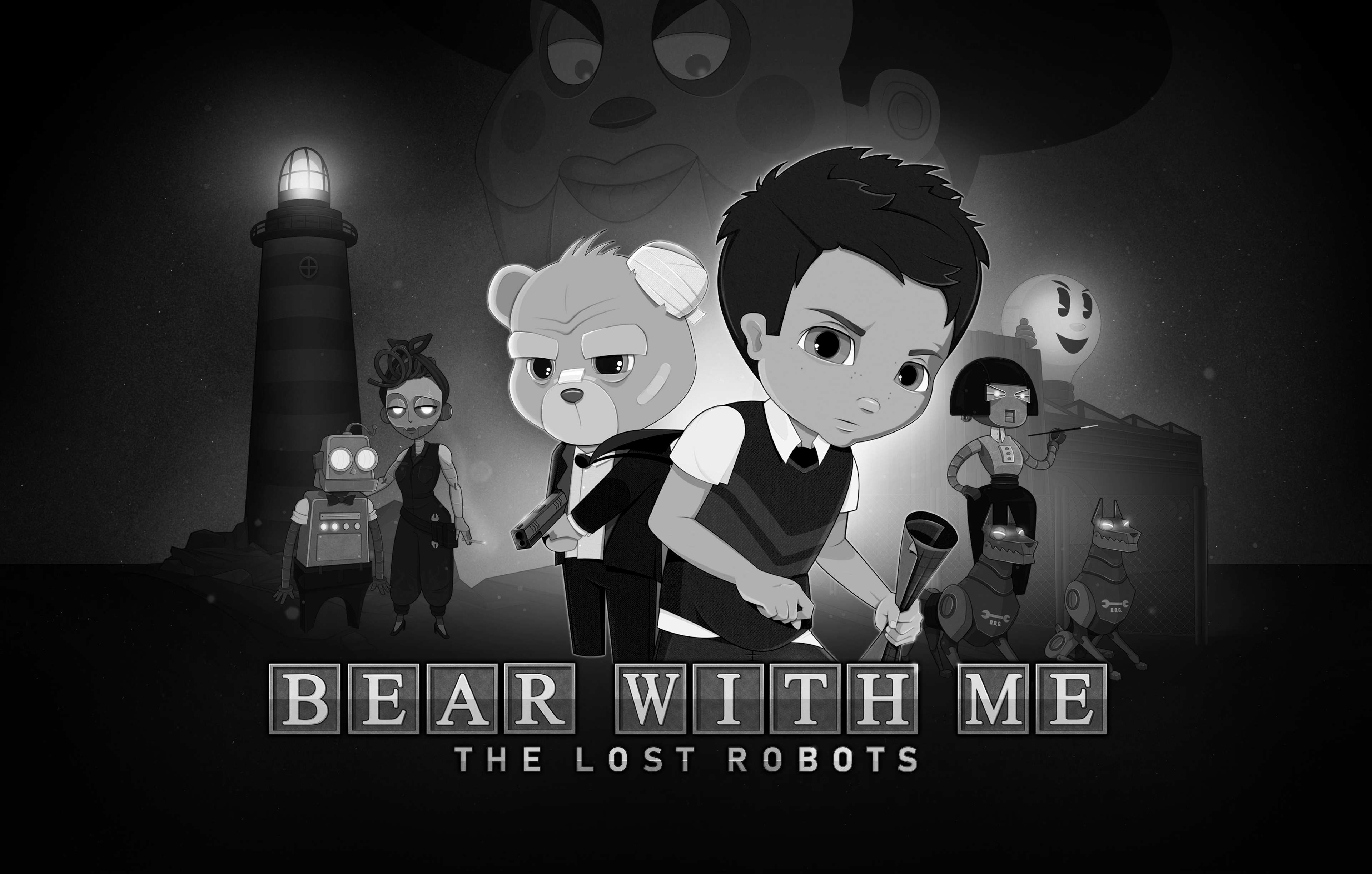










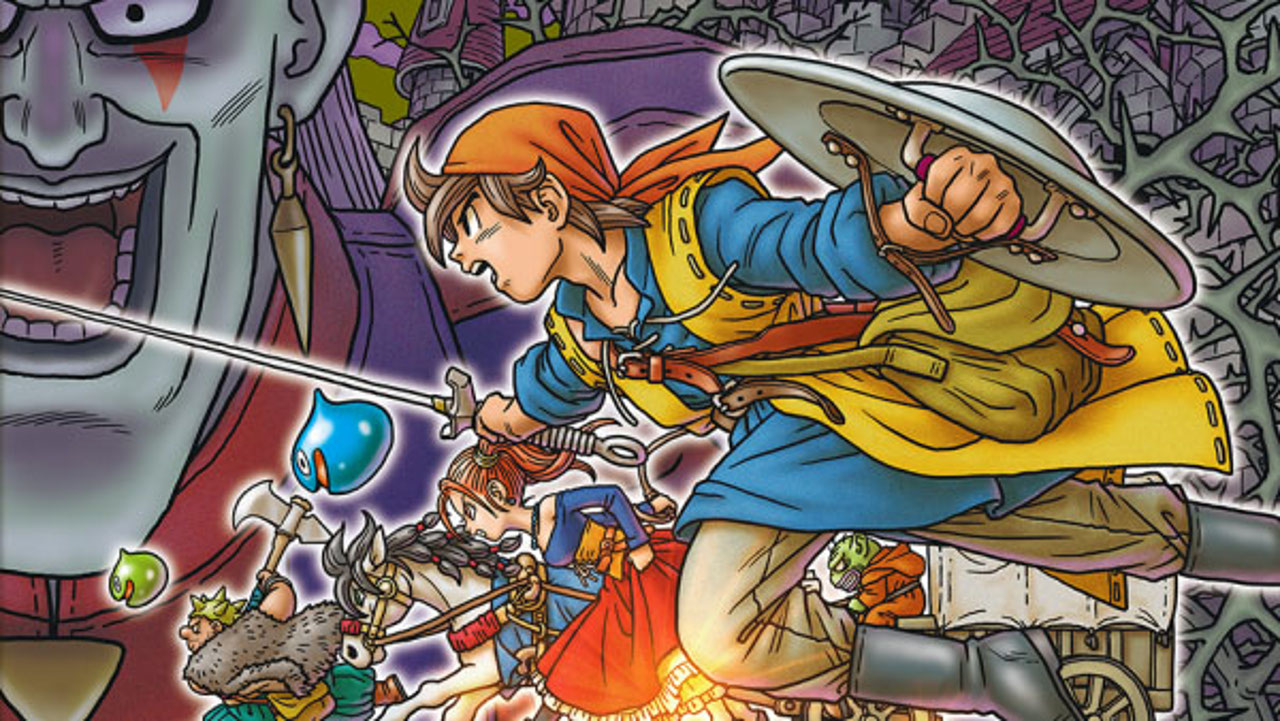



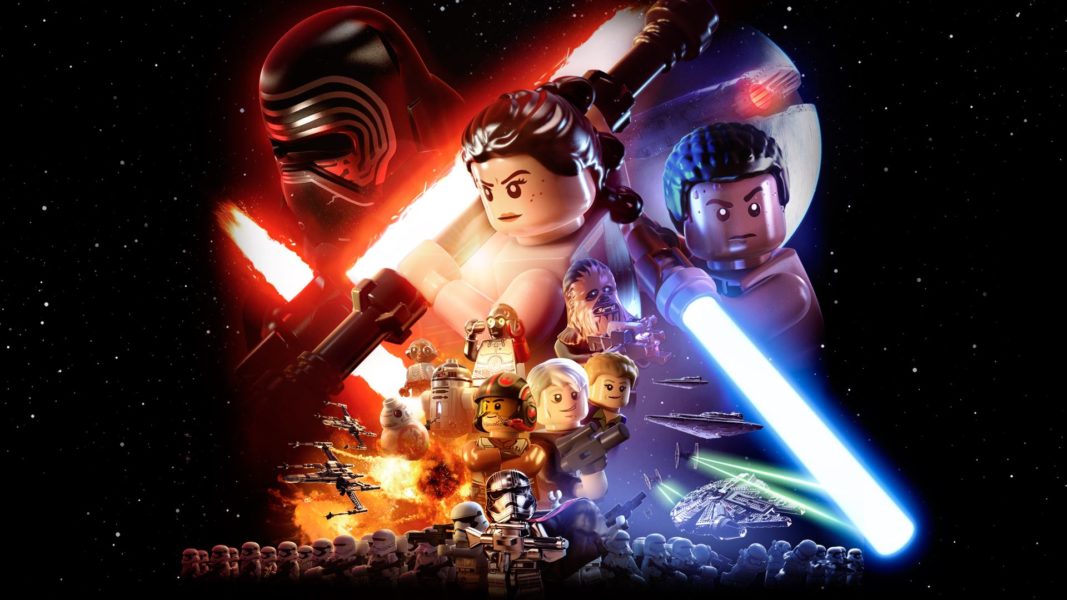












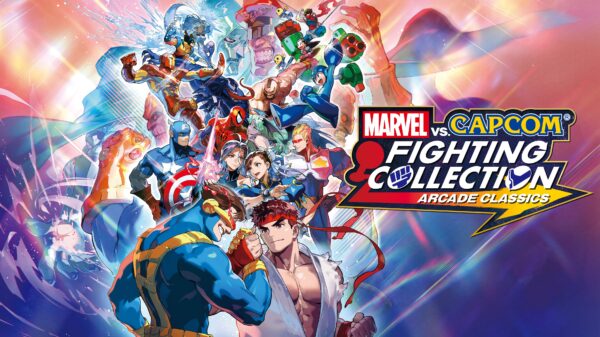





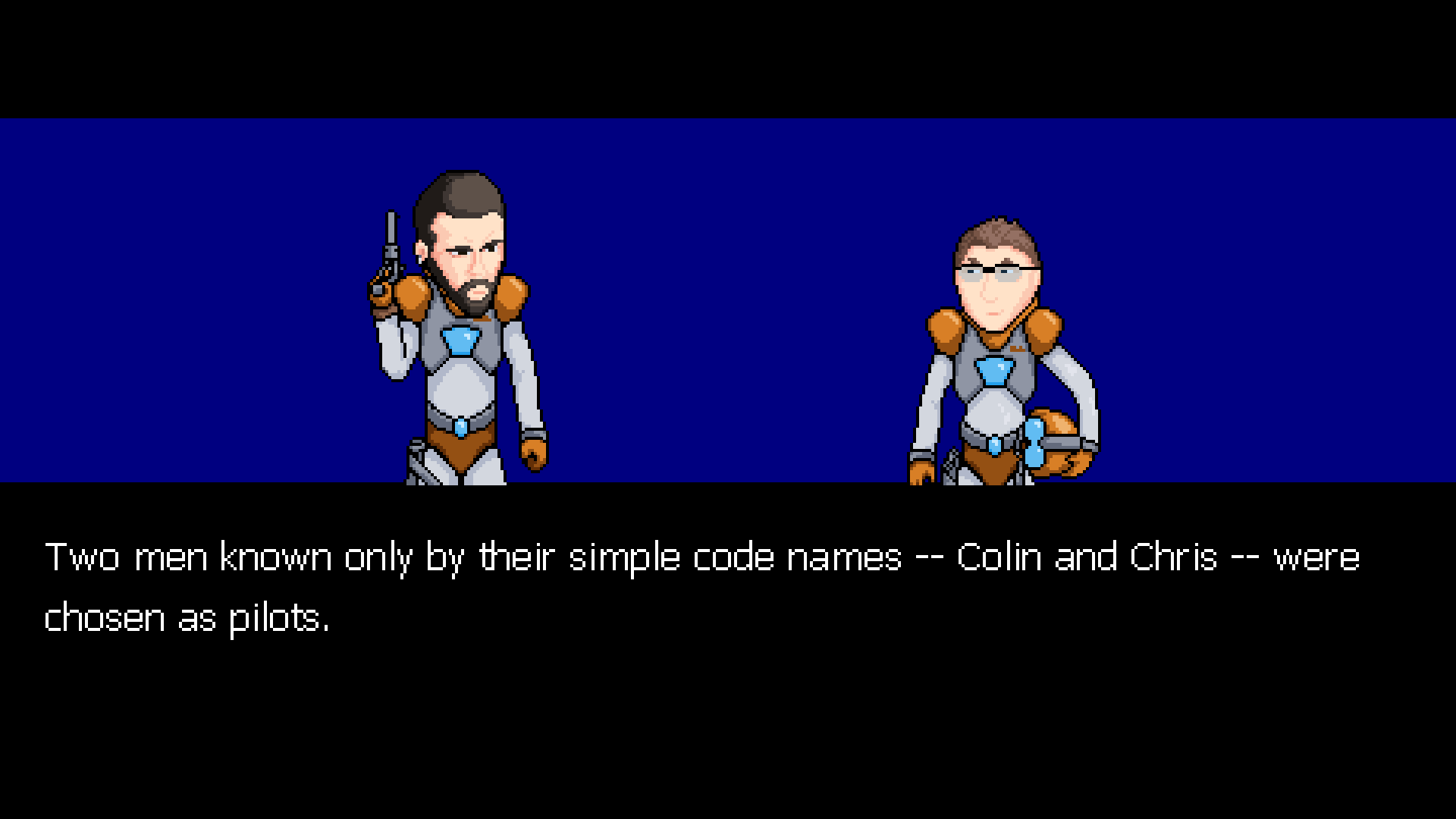

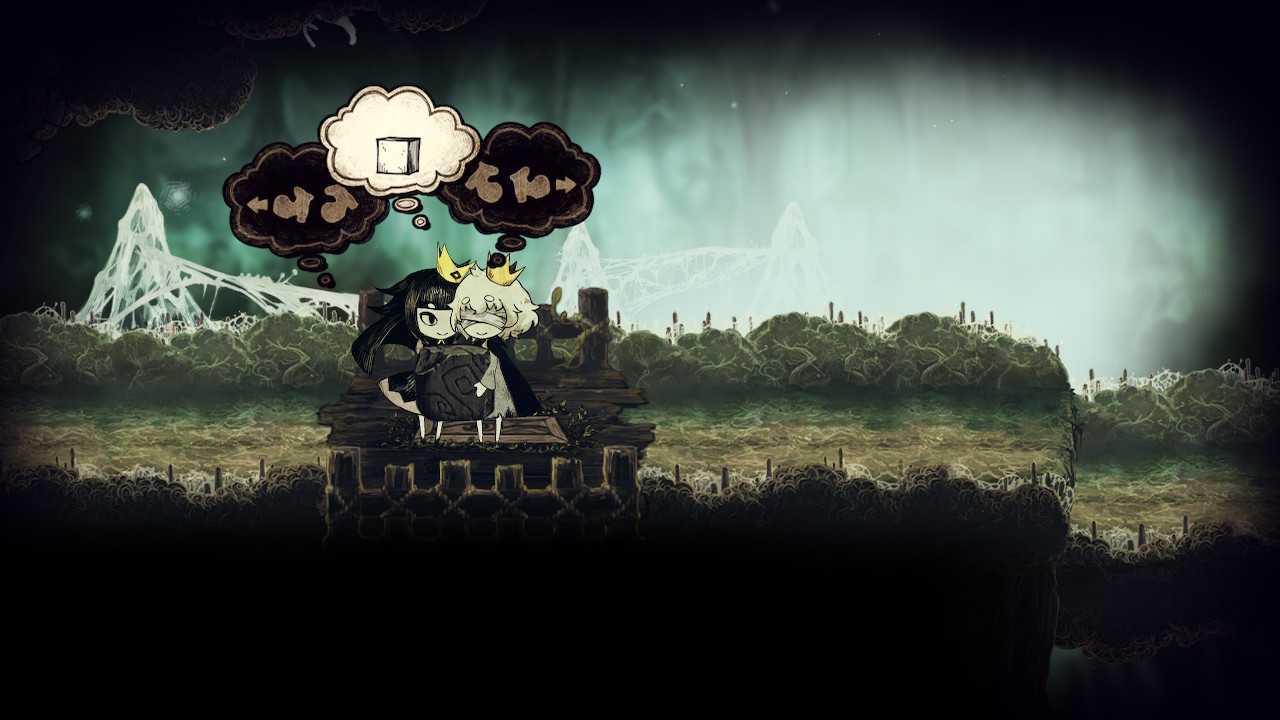






























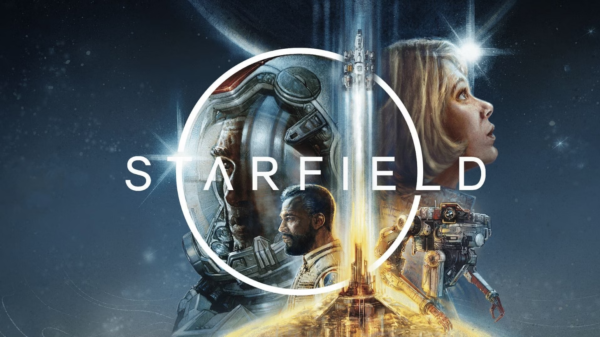













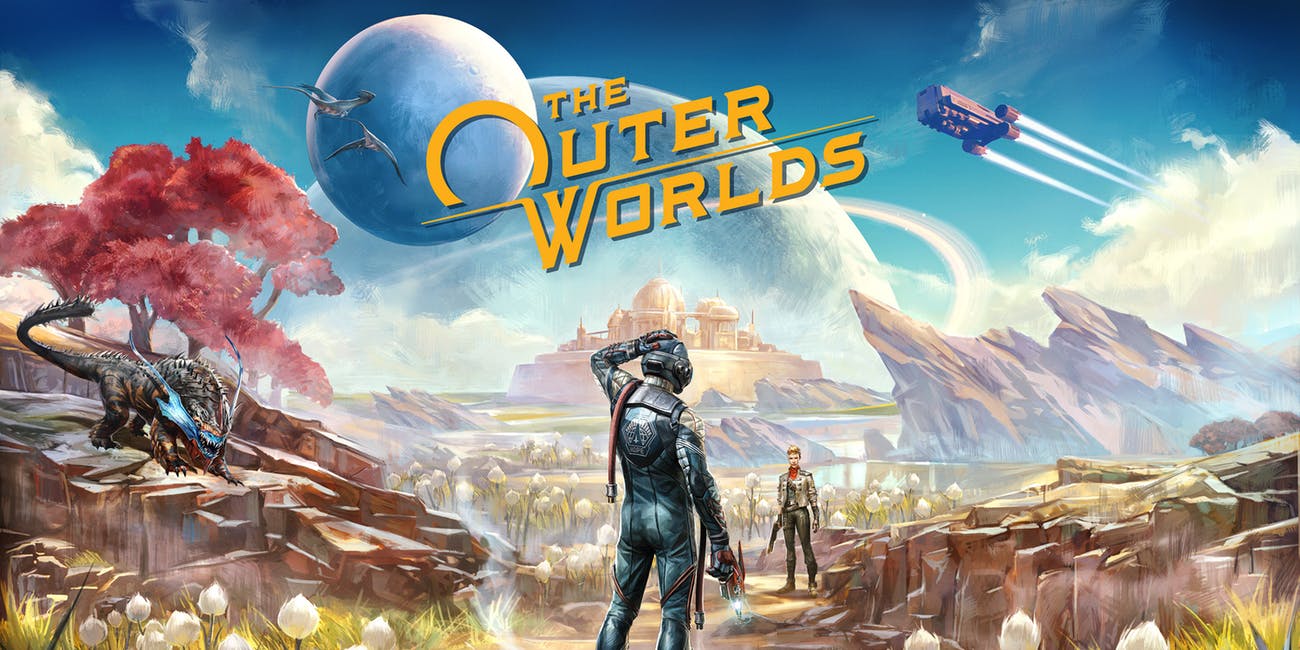

















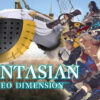


Noah
May 1, 2010 at 8:11 pm
Thank you for this enjoyable and insightful essay. Many of the discussions regarding this game have lacked any real depth in analyzing the reasons for the decisions made. I can certainly sympathize with the story-driven dilemma, but even if you grant the premise (that this game is linear, overall, in order to facilitate the narration) , the story is, well, bad. I’d argue that not only is it bad, it’s objectively bad. The characters are absolutely one dimensional husks with no depth of persona. It’s as though each character is an unwavering, anthropomorphic emotion. Not only are they dull, they maintain some of the more eye-rollingly, face-palmingly obnoxious names since “Cloud Strife”. Lightning? Snow? These are what 6 year olds name their pets. Flat characters aside, the tale is told in so many grunts, sighs, oohs, huhs, mmms, and other completely unnatural emotes. For every action– be it one of the infinite so-depressed neck droops, or mind-numbing 100 mile stares — another nearby character has to grunt idiotically, or swoon, or sigh, or (the worst, and most common of all) “huh!?”. Even in cut scenes with lots of characters, the background voices aren’t mumbles, it’s the same bizarre grunting. And then there’s the incomprehensible story. I’ve played every Final Fantasy game, and usually found something to enjoy in the plot, with a good dose of willingness to suspend disbelief if the yarn was a good one.
A couple points here. First (and this isn’t the first modern RPG to suffer from this) the G in RPG is GAME. This isn’t a book. I love to read, but I don’t like reading hundreds of pages on my television to get a grip on the (decidedly insipid) plot. The plot should reveal itself through gameplay, EVEN IF it is linear. Cut scenes are nice, but it’s also not a movie. If I wanted to rent a gorgeously drawn but vapid anime, I would. The plot itself feels about as interactive as the menu at the start of a DVD, which brings me to point two. This isn’t even an interactive narrative. The problem isn’t that the story is merely linear, it’s that the player only actively engages in the battle scenes. JRPGs in the past at least allow you to feel like you are “on the train” even if it is on rails. Here, we’re “watching the train”. Without any NPC interaction, without any real towns in the traditional sense, without any exploration or side quests, the viewer (not player) might as well be holding a tv remote as a controller. There needs to be SOME level of interaction for this even to be a game. If the only interaction in the entire game is during (or for the benefit of) battles, this is no longer an RPG at all, under ANY definition. It’s a real time hack-and-slash with more cinematic cut-scenes than most. This game is more like Dante’s Inferno than any RPG, east or west.
This game is a disaster as EITHER type of RPG. This is NOT an RPG, because you don’t PLAY a role, you simply watch one unfurl, with no interaction, incredibly trite characterization, a confounding and ultimately dull plot, and, well, gorgeous scenery. This could be remarketed as “Avatar, the game”